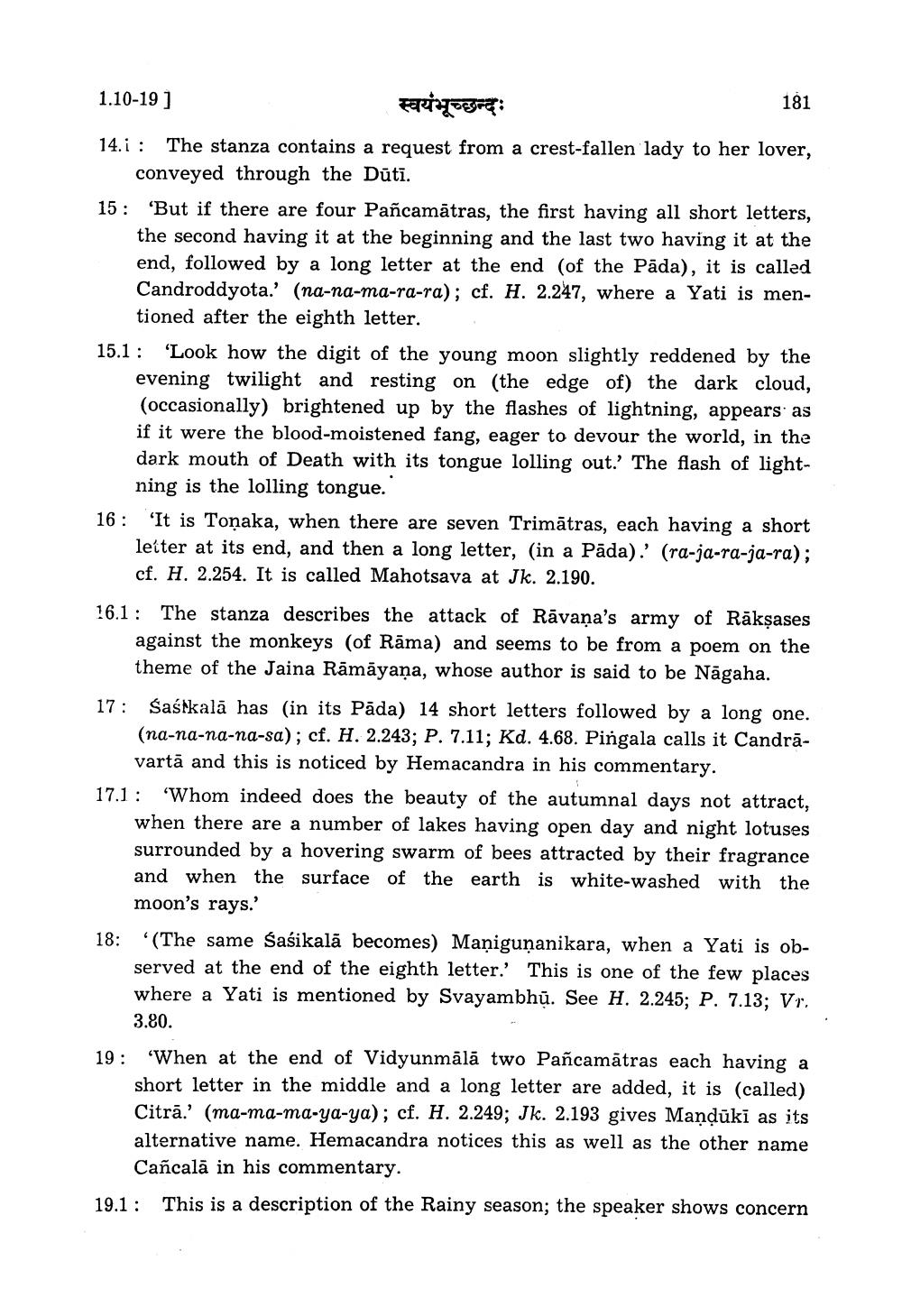________________
1.10-19)
181
स्वयंभूच्छन्दः
14. i : The stanza contains a request from a crest-fallen lady to her lover,
conveyed through the Dütī. 15: 'But if there are four Pañcamātras, the first having all short letters,
the second having it at the beginning and the last two having it at the end, followed by a long letter at the end of the Pāda), it is called Candroddyota.' (na-na-ma-ra-ra); cf. H. 2.247, where a Yati is men
tioned after the eighth letter. 15.1: 'Look how the digit of the young moon slightly reddened by the
evening twilight and resting on (the edge of) the dark cloud, (occasionally) brightened up by the flashes of lightning, appears as if it were the blood-moistened fang, eager to devour the world, in the dark mouth of Death with its tongue lolling out.' The flash of light
ning is the lolling tongue. 16: 'It is Toņaka, when there are seven Trimātras, each having a short
letter at its end, and then a long letter, (in a Pāda).' (ra-ja-ra-ja-ra); cf. H. 2.254. It is called Mahotsava at Jk. 2.190.
16.1: The stanza describes the attack of Rāvana's army of Rākşases
against the monkeys (of Rāma) and seems to be from a poem on the
theme of the Jaina Rāmāyaṇa, whose author is said to be Nāgaha. 17: Sasikalā has (in its Pāda) 14 short letters followed by a long one.
(na-na-na-na-sa); cf. H. 2.243; P. 7.11; Kd. 4.68. Pingala calls it Candrā
vartā and this is noticed by Hemacandra in his commentary. 17.1: 'Whom indeed does the beauty of the autumnal days not attract,
when there are a number of lakes having open day and night lotuses surrounded by a hovering swarm of bees attracted by their fragrance and when the surface of the earth is white-washed with the
moon's rays.' 18: '(The same Śaśikalā becomes) Maņigunanikara, when a Yati is ob
served at the end of the eighth letter.' This is one of the few places where a Yati is mentioned by Svayambhū. See H. 2.245; P. 7.13; Vr.
3.80. 19: "When at the end of Vidyunmālā two Pañcamātras each having a
short letter in the middle and a long letter are added, it is (called) Citrā.' (ma-ma-ma-ya-ya); cf. H. 2.249; Jk. 2.193 gives Mandūki as its alternative name. Hemacandra notices this as well as the other name
Cañcalā in his commentary. 19.1: This is a description of the Rainy season; the speaker shows concern




